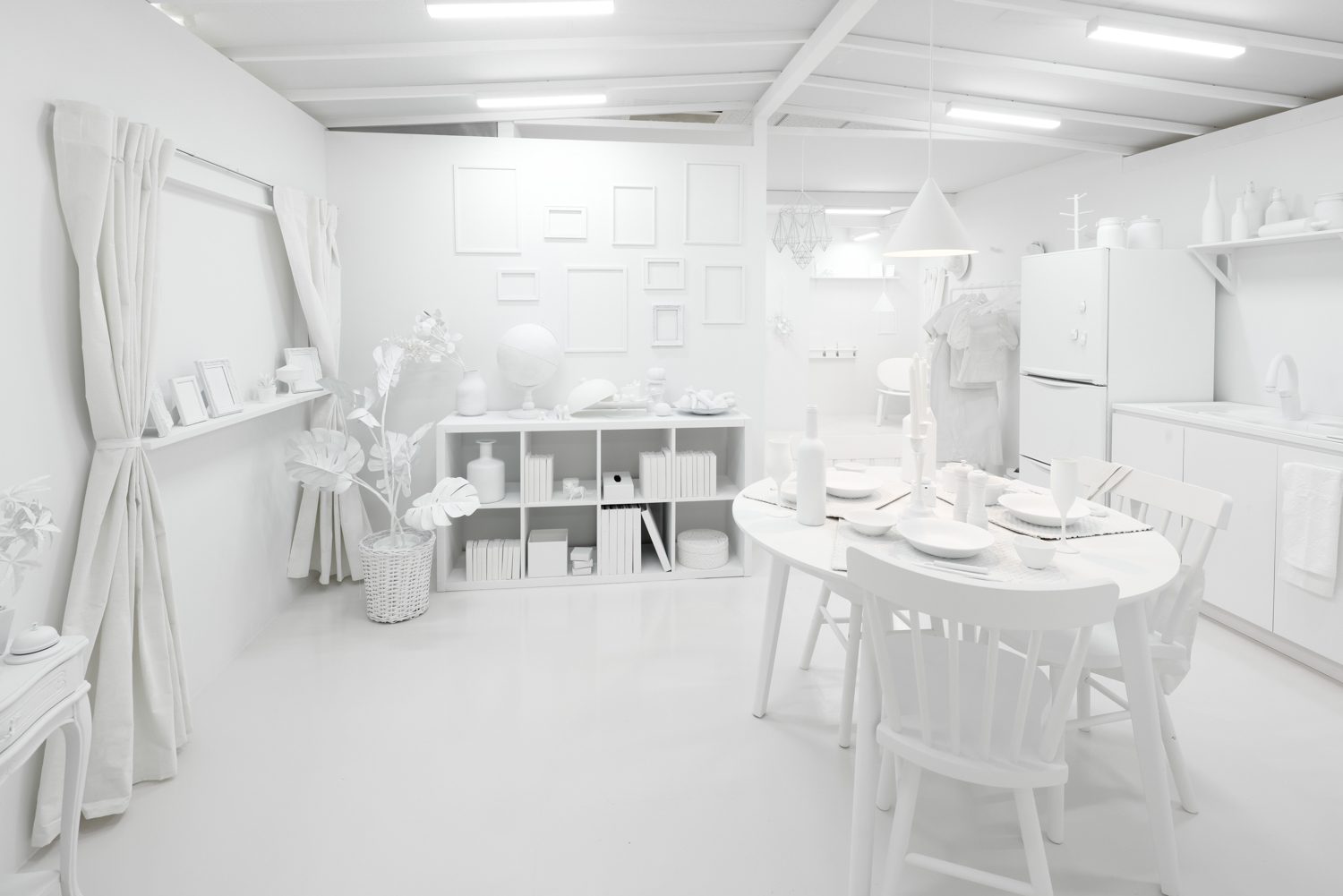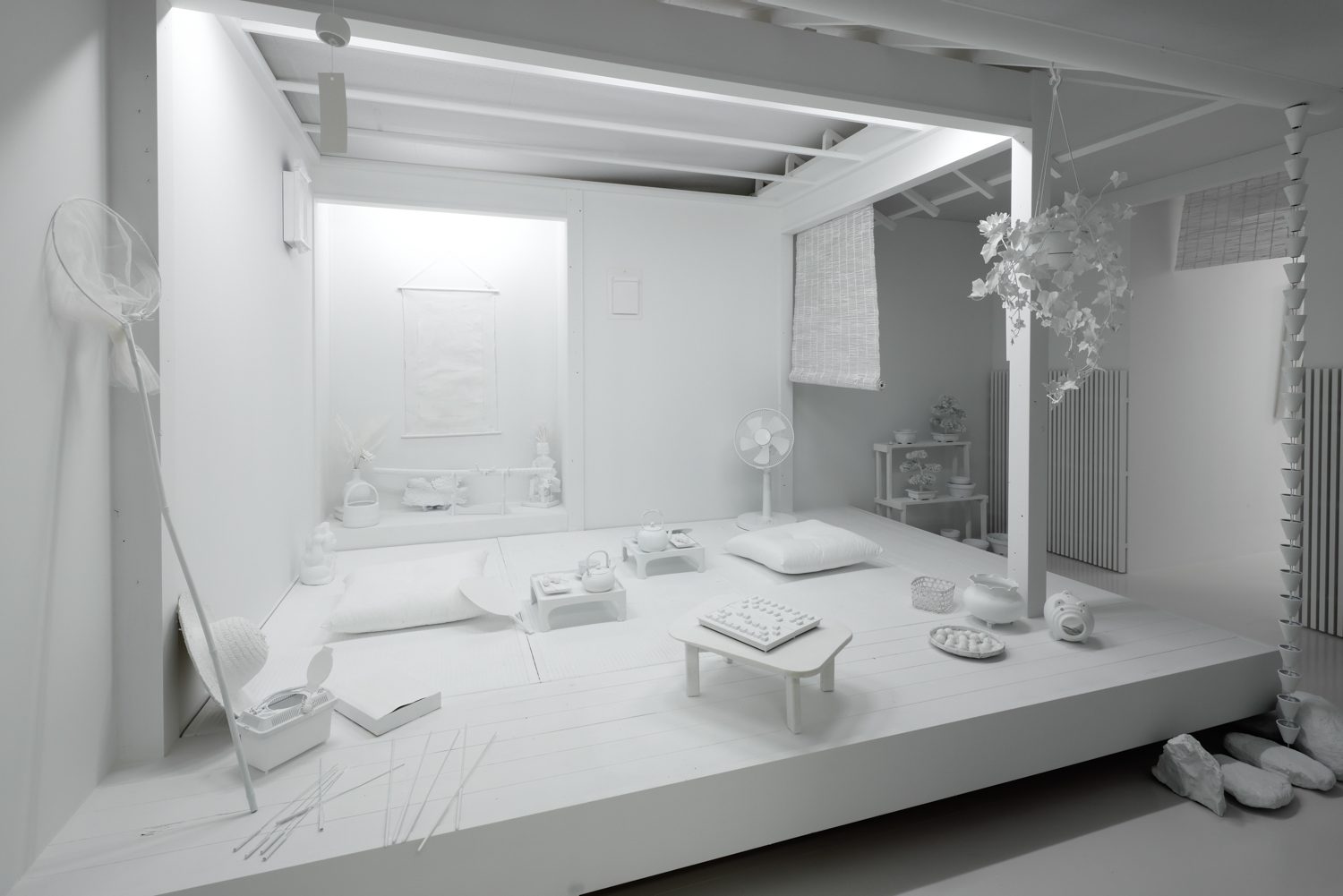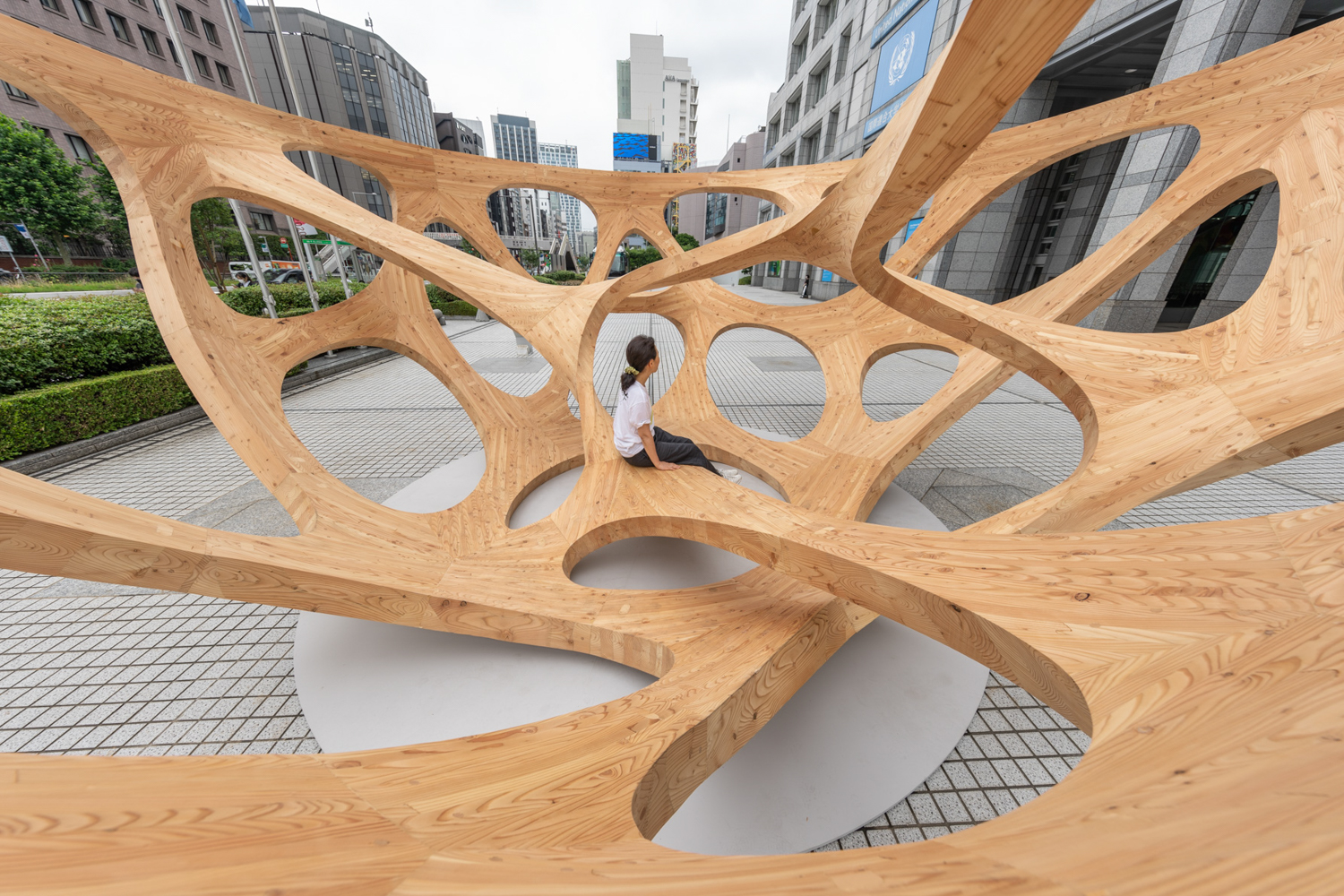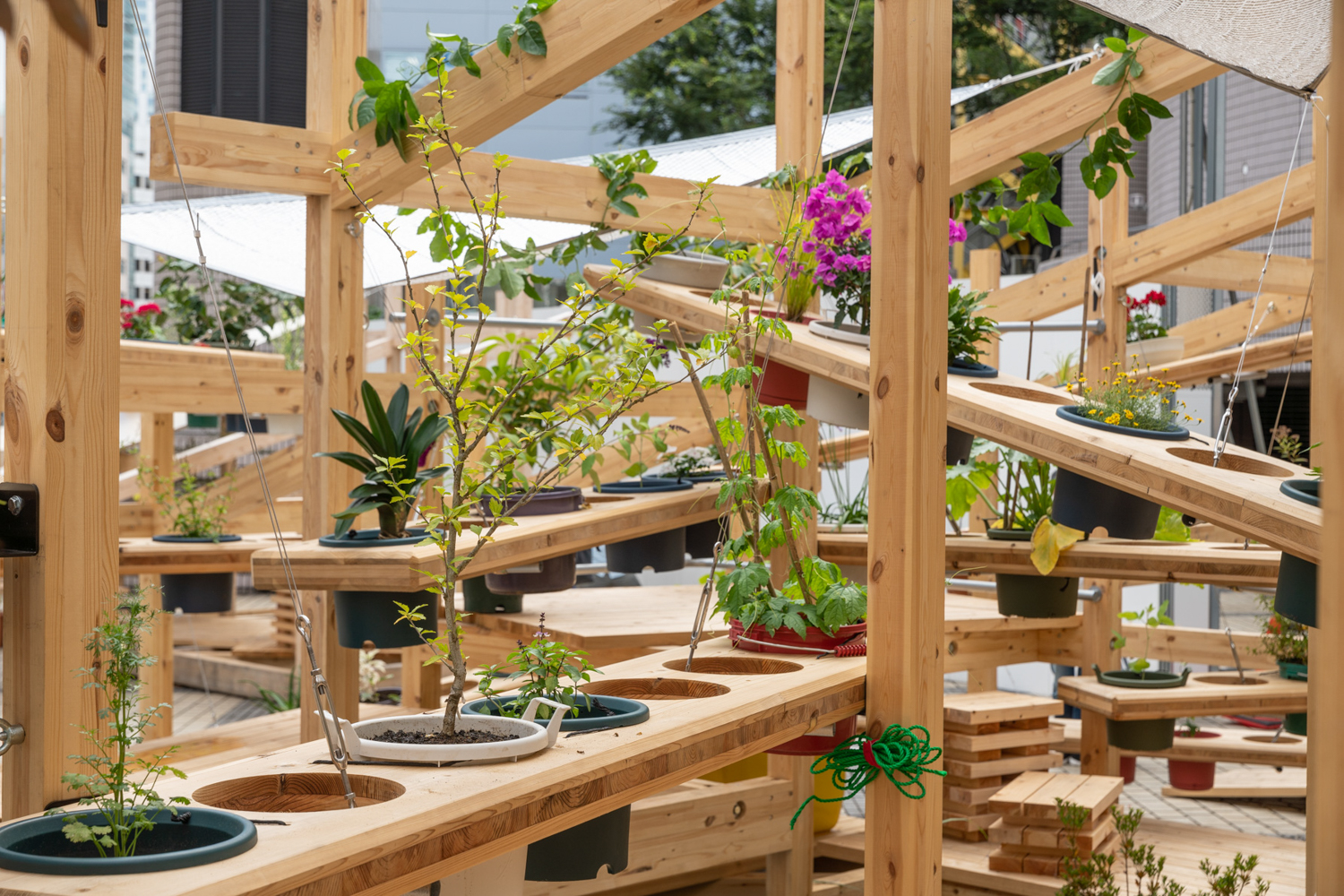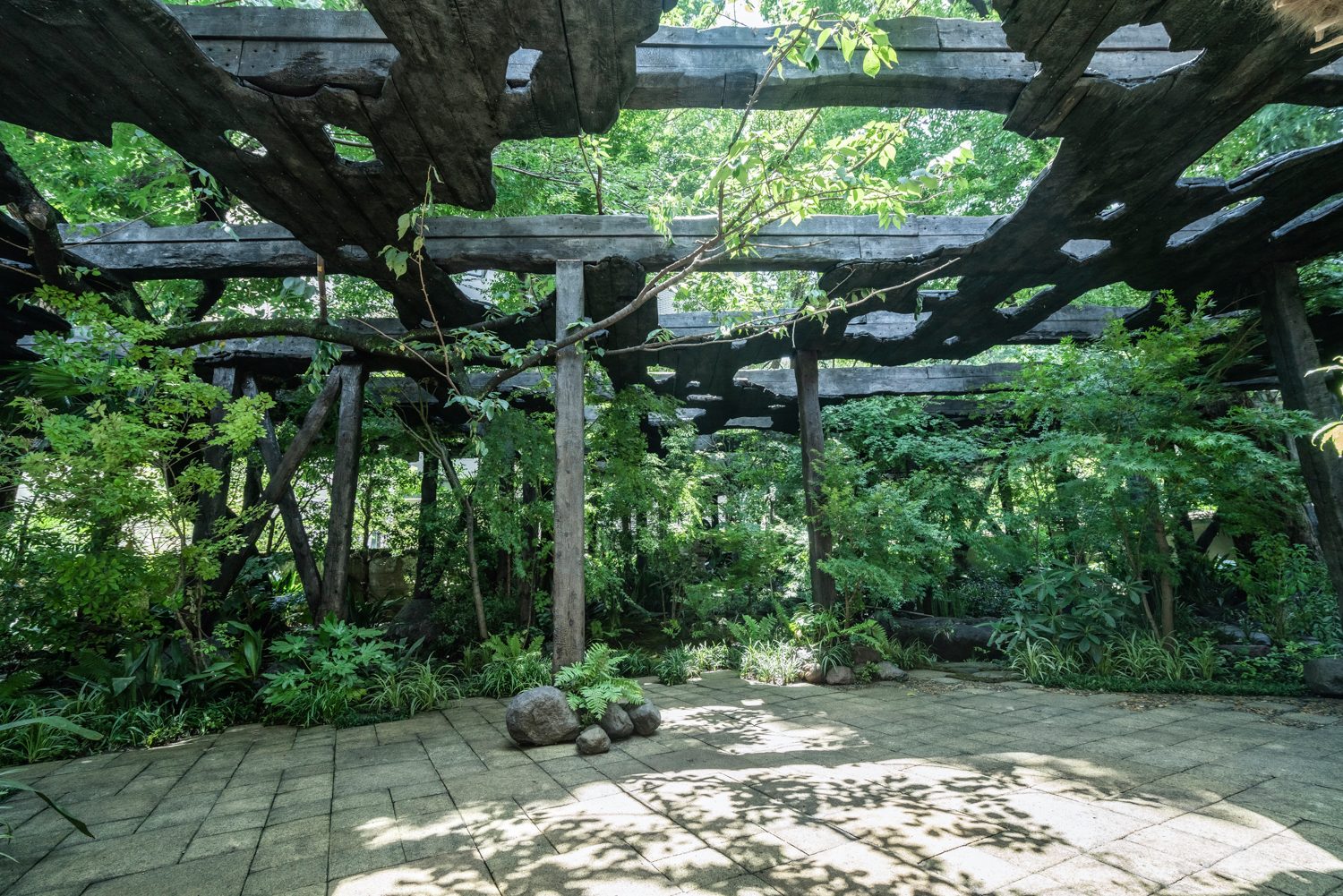COMPLIMENTING THE TOKYO OLYMPICS 2020, PAVILION TOKYO 2021 IS THE PUBLIC INSTALLATION ARTS AND EXHIBITIONS PROGRAM INITIATED BY THE CITY OF TOKYO TO BE THE INSPIRATION AND THE MOTIVATION FOR THE PEOPLE TO CARRY ON AMID THE EPIDEMIC ERA.
TEXT: PRATARN TEERATADA
PHOTO COURTESY OF PAVILION TOKYO 2021, CREDIT AS NOTED
(For Thai, press here)
After taking a little tour of the Tokyo Toilet Project, we will continue to cover other cool creations, especially the public space projects that Japan had prepared for the Olympics with the help of its architects, designers and artists. Japan was getting its capital city ready to welcome the Olympics despite having to work under the dire condition that is the COVID-19 pandemic, which was thought to be under control but isn’t, preventing Tokyo from opening to its fullest capacity. But against all the odds, Tokyo Olympics 2020 pulled through without any major disruptions, and the host’s spirit and creativity deserve nothing but admiration.

Tokyo Castle by Makoto Aida © AIDA Makoto | Photo: ToLoLo studio
Besides the design projects that were revealed throughout the event, the governing body of Tokyo has initiated a cultural program called Pavilion Tokyo 2021, which comprises of eight installation art works and an exhibition. The program is a part of the Tokyo Tokyo FESTIVAL that includes 13 special activities. Despite the Olympics being over, Pavilion Tokyo will continue to be open for public viewing until September, 5th 2021.
The exhibition spaces of Pavilion Tokyo 2021 are scattered in different tourist spots such as Aoyama, Yoyogi and Shibuya as well as some of the city’s historical sites. Of all the participating creatives, there are two artists on the list. The first one is Makoto Aida, who built two Japanese castles, one from cardboard and the other from blue-colored tarpaulin, a sarcastic expression about the money and attention invested put on mega stadium projects with a message that the castles made of cheap materials can provide shelter all the same. The other artist is none other than Yayoi Kusama with a remake of ‘The Obliteration’ the iconic display the artist created back in the 1960s, the decade in which the first Tokyo Olympics was held. The work is an installation piece of a white room that invites visitors to put stickers of various sizes and colors on the plain white walls to help create the polka dot pattern.
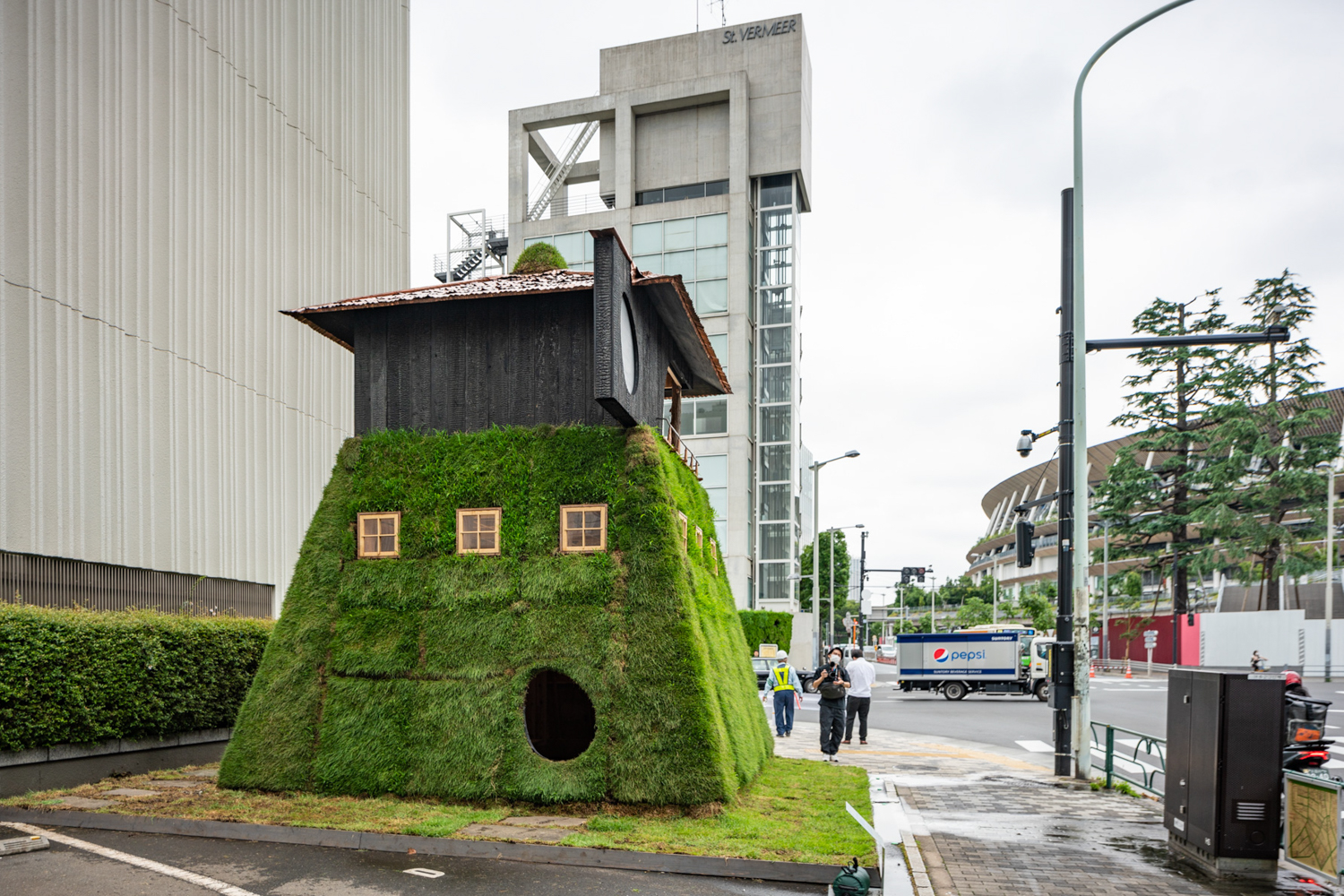
Tea House “Go-an” by Terunobu Fujimori | Photo: ToLoLo studio

Tea House “Go-an” by Terunobu Fujimori | Photo: ToLoLo studio
The “Go-an” tearoom by architect and historian, Terunobu Fujimori is a small hut stand atop a small grass hill. Visitors need go through the circular opening at the foot of the hill, climb up the narrow staircase to the top where they can have a cup of tea while enjoying the view of the National Stadium. Akihisa Hirata’s ‘Global Bowl’ sends a message about connectivity with its bowl-shaped structure built using the CNC machine to cut all the wood. Nearby is STREET GARDEN THEATER by Teppei Fujiwara, a very poetic piece that reveals itself in the form of a wooden pavilion. It displays the connection between urban citizens and the vegetable and flower pots inside the structure – a little piece of happiness created by the architect for the people.
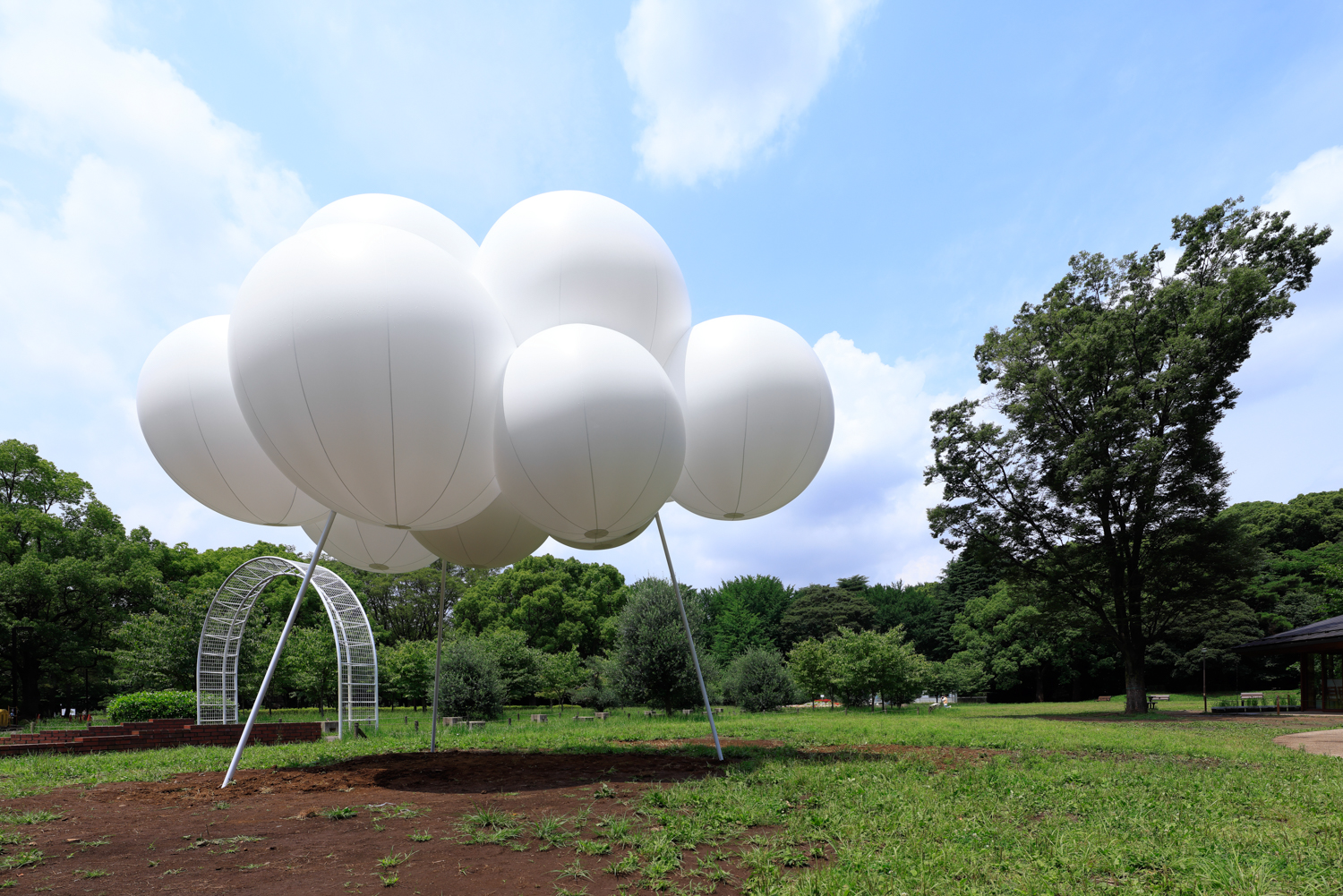
Cloud pavilion by Sou Fujimoto | Photo: Keizo Kioku
Another well-known and notable architect, Sou Fujimoto, has designed a pavilion that looks like the shape of a cloud situated in Yoyogi Park that was home to the Olympic Village back in 1964. His cloud balloon is a metaphor of the roof that stretches across and connects to the world. Junya Ishigami chooses to install his pavilion near Kudan House, a private residence owned by a businessman built in 1927. He uses Yakisugi, which is thin-plank wood siding and paneling heat treated in a traditional Japanese process for the pavilion which is named ‘Kokage-gumo’ . It is literally translated as ‘a cloud made of wood,’ creating the aesthetics that makes the structure appear as if it was placed there for centuries. Pritzker Prize laureate, Kazuyo Sejima, chose to work on an installation with the shape of a winding creek that showcases her signature use of weightless metallic mass. Sited in Hama-rikyu, the work is a reminiscence of a creek inside a Daimyo’s garden from the Edo Era as Sejima intended for the stream of water to represent the constantly evolving life of Tokyo.
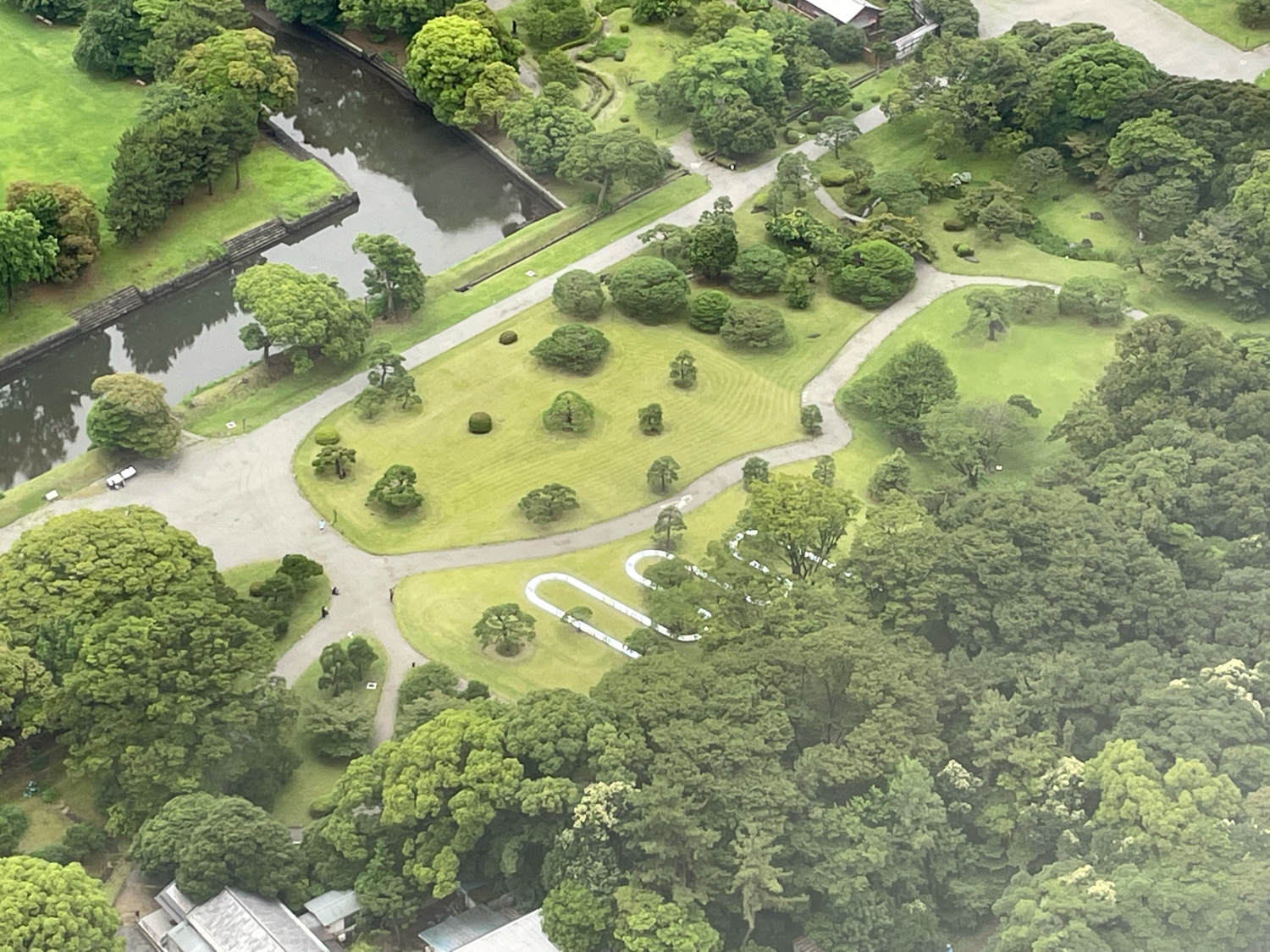
Suimei by Kazuyo Sejima | Photo: Kazuyo Sejima & Associates
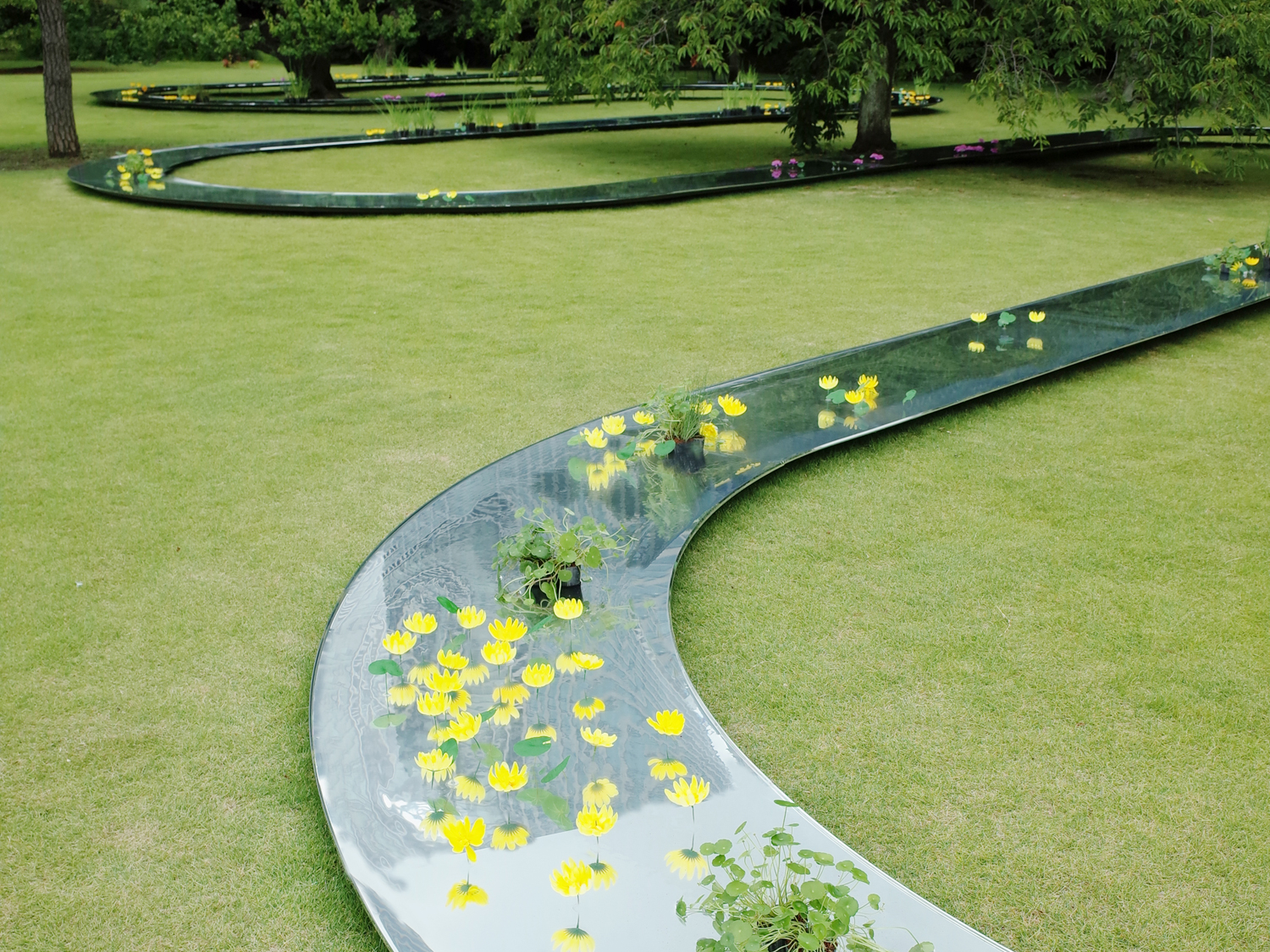
Suimei by Kazuyo Sejima | Photo: Kazuyo Sejima & Associates
Last but not least is The Installation “2020-2021” by Daito Manabe and artistic practice, Rhizomatiks, which occupies the space across WATARI-UM, The Watari Museum of Contemporary Art. The museum also houses The Pavilion Tokyo 2021 exhibition, which has combined together sketches, plans, models and materials of each of the pavilions.

“2020-2021” by Daito Manabe + Rhizomatiks | Photo: Keizo Kioku
If it wasn’t for COVID-19, this Olympics would have been much livelier. But from the official events to the overall vibe of the city, Japan never disappoints when it comes to creativity, technology and the collective effort between the public, private, and government sector. And that sends an incredibly positive energy to the world that desperately needs it more than ever.

 Global Bowl by Akihisa Hirata | Photo: ToLoLo studio
Global Bowl by Akihisa Hirata | Photo: ToLoLo studio
